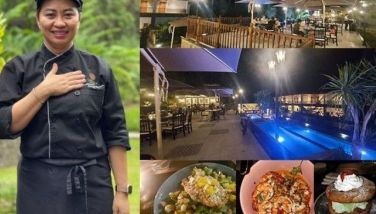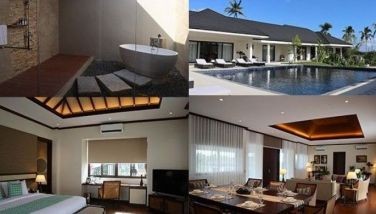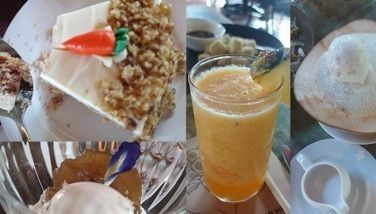Fukuoka calling
In the end she got teary-eyed. I’ve met tour guides as enthusiastic as Manami Ofuchi before, but none as emotionally invested in a band of tourists as she was. It’s as if she’s taking her friends on a tour of her house and garden. Manami was born and raised in Fukuoka, but when she got married she moved across Japan every four to five years with her husband. Three years ago, she returned to her beloved port city.
“We in Fukuoka are very friendly and outgoing, we love good food… And shopping!” The guide could very well be describing Filipinos as well.
She joked a lot, too. (“Japan has four seasons — winter, spring, summer and fall. The Philippines has six — hot, hotter, hottest, and wet, wetter, wettest.”) As we strolled from our hotel in Canal City toward the yatai mobile food stall along the Naka River where we would partake of big bowls of ramen (with side dishes of gyoza and karaage) and equally big bottles of Asahi beer, she pointed to the ubiquitous love hotels in the area and said, with a staccato of giggles, “Sexual facilities.”
She shared, “Fukuoka is in Kyushu Island, the northern part. It’s the sixth largest city in Japan. The population is 1.5 million. There are hundreds of yatais in Fukuoka.” One hundred fifty, according to the guidebook.
One such place was where we had our very first meal: a lamp-lit box presided over by two Japanese cooks with trendy hairstyles slicing away at mouth-watering meats to a spate of smartphone camera flashes. Yatai stalls in a row, all busy; the Naka flowing quietly in the background; Fukuokans and tourists enjoying the autumn evening. The vibe is amazing.
On our last day in Fukuoka, we would have a Mizutaki feast at Hamamidori restaurant: a hot pot dish cooked in a ceramic container called donabe right at the dinner table — chicken thighs, kikuna leaves, Nappa cabbage, a number of ingredients are thrown in one after the other and the resulting broth is downright delicious. The girls in the group were all-smiles as they sipped the soup full of, as our guide informed us, collagen. Skin-enhancers or not, it was a gustatory trip.
Well, this tour would take us to spots such as the Dazaifu Shrine, Imamura Catholic Church and Kokura Castle, as well as shopping malls namely Tosu Premium Outlets, the Riverwalk at Kitakusyu and Aeon Mall Fukuoka. Flanking the Fukuoka experience are visits to premium Cathay Pacific lounges at the Hong Kong International Airport (The Bridge, my favorite, has the Long Bar), as well as comfy flights from Manila to HK via CX, and Dragonair from HK to Fukuoka.
In between there would be epiphanies, hunts for cheap LPs and swigs of sake.
Shrine a light on you
The dream destination for Filipino tourists has always been Tokyo, Tokyo and, well, Tokyo. But for me, surprises spring from not-as-heralded places such as Yokohama, the Nagoya and, now, Fukuoka. Laid-back, green all around, ancient castles and contemporary architecture side by side — heck, I could live in a place dubbed as one of the world’s most livable cities.
In this fair city is the Dazaifu Tenmangu shrine, one of the three great Tenjin shrines of Japan — the others being Kitano Tenmangu in Kyoto and Hofu Tenmangu in Hofu, Yamaguchi Prefecture. It is about 30 minutes away by train from Central Fukuoka. “Dazaifu Tenmangu is one of the famous Shinto shrines,” Manami explained. Followers of Shintoism believe that gods exist in all facets of nature: mountain, trees, flowers and oceans, everywhere. The number of gods is around eight million. Buddhism was founded in India and introduced to Japan in the 6th century via China and Korea. Shinto and Buddhism flourished together.
Manami explained, “The Japanese are very tolerant of religions. Many young people get married in a Christian church, even if they’re not Christians; maybe ladies want to wear the white gown and they like the atmosphere. Some say some Japanese people are Shinto when they are born, Christian when they get married, and Buddhist when they pass away.”
The Dazaifu Shrine is dedicated to the memory of Michizane Sugawara, a politician and scholar in the 9th century; he is now considered the “guardian of learning.” The area is surrounded by plum trees, camphor trees and rows upon rows of irises. A calming place.
“People go here to pray for a successful entrance examination — in high school and in the university,” the guide informed us. The studious ones can write their wishes to ace exams on small, votive wooden boards or ema. (If I were still in high school I’d think this could be the antidote against the dread of Algebra.)
The streets are lined with bazaars selling souvenirs (samurai umbrellas, traditional Japanese masks, Hello Kitty in kimono!) and umegaemochi rice cakes, as well as bicycle rental shops and a Starbucks outlet with the funkiest architecture I’ve ever seen courtesy of Kengo Kuma and Associates: the coffee shop resembles an intricate needlework of wood. The path toward the shrine itself is marked by a torii (or “bird perch”) gate, meaning that one is entering a sacred world.
We stopped by a bronze statue of an ox. Legend has it that Michizane’s coffin was carried on an ox-pulled cart, and when the animal suddenly stopped and refused to move, it was taken as a sign — Michizane was buried on that particular spot. The statue is said to possess healing powers.
“If you have an ailment in your body, touch that particular part of the statue and you’d become better. If you stroke the head, you will become more intelligent.” We tourists did as instructed and hoped in earnest that it wasn’t just… pardon the pun… a load of bull. I wondered what the significance is of a horse-size kirin — part lion, part unicorn and pure badass. Not out of place, though, since the legends related to the shrine involve flying plum trees and sitting bulls.
There is a two-arched crimson bridge crossing over a heart-shaped pond, representing past, present and future. Outside the shrine itself is a purification washbasin. (“Wash left hand, wash right hand, cup your hand, fill it with water and wash the handle of the dipper.”) People throw coins into the box behind the red wooden fence of the main shrine, bow two times, clap their hands, and pray.
Afterwards we went to a residential area to visit the Imamura Catholic Church in all its Romanesque glory — red bricks, two towers and all. It was built in 1913, but there were already Hidden Christians in the area since the 16th century, worshipping in secret rooms in private homes, transforming figures of saints and the Virgin Mary to look like traditional statues of the Buddha and bodhisattvas. Those caught and who didn’t want to renounce their faith were tortured and executed. The church is a must-see for devout Filipino Catholics; for non-believers, the architectural design of the church, the stained glass windows and paintings of the Stations of the Cross are worth the bus ride into rural Fukuoka.
Alright, shop
What made this particular tour unique is what our hosts Cathy Pacific, Japan Tourism Agency (JTA) and Japan National Tourism Organization (JNTO) did: balance the cultural aspect (shrines, samurai castles) with periodic stints in shopping malls.
Tosu Premium Outlets is where the high-end items are (Armani, Brooks Brothers, Bose, Coach, etc.) in “outlet store” prices. If Tosu is akin to Bonifacio High Street, then Kitakyushu Riverwalk with its funky Deco City section recalls Virra Mall and Shoppesville in Greenhills. I spent a lot more time at the Aeon Mall in Fukuoka (just before we headed for the airport for our return trip to Manila) because of Shimamura Music, which is like a grocery store of musical instruments. The choices are endless.
You walk in, ask for a guitar cable, get a Sadowsky bass or a Gibson ES-335, plug it in, and play that daydream of a guitar with a nightmarish price tag to your heart’s content. But there are tons of discounted items in the store: stomp boxes, guitar and bass strings, straps, drumstick bags, even guitars. There are secondhand Fenders (US-made and the equally coveted Japan-made) that are relatively affordable. What’s great about stores such as Shimamura and Ishibashi Music in Tokyo and Yokohama is the selection of instruments — models, colors, finishes, fretted or fretless, rosewood or maple, active or passive… they have it. The pre-owned guitars even have the tags detailing their history: what year it was purchased, what changes or modifications were made in the instrument, what parts are still problematic. You can spend an entire afternoon at Shimamura, just looking at items you’ll never see in a music shop in Manila.
When I asked Manami if there were any good record stores in Fukuoka, she handed me a note the next day and it simply read “Juke Records.”
Old man, look at my life… I’m a lot like you
I went to the Tenjin area of Fukuoka, in Chuo-ku, and found the shop owned by Ko Matsumoto, a walking discography of a man. There is nothing pretentious about Juke Records. It actually looks like a department of motor vehicles or a solicitor’s office. But a lot of Filipinos would think they’ve died and gone to vinyl heaven.
Inside the store are pre-owned yet near-mint condition records (Fishbone, Sisters of Mercy, The Damned, Donny Hathaway, etc.) at shockingly low prices — P600 to P700 each, sometimes cheaper than that. Some titles at Juke are discounted even more: Echo and the Bunnymen’s “Ocean Rain” at P360, Dire Straits’ “Brothers in Arms” and Tears for Fears’ “Songs from the Big Chair” at P160 each. All Japan-pressed, practically new, hardly been played. The LPs and singles are conveniently stacked according to genres: ’70s, ’80s or ’90s punk, UK indie, American alternative, ska, and trash metal, among others. Matsumoto priced a triple-LP, boxed, first pressing of George Harrison’s “All Things Must Pass” in very good condition at P540 because the previous owner wrote his name on the album cover — “Kenichi” or something — therefore “devaluing” the record. (I remember a shop in Cubao selling a copy of Bruce Springsteen’s “Tunnel of Love” with the name “Domeng ‘87” stamped on the cover. Who is this Domeng guy and why did he sell his Springsteen record?) Kenichi, though, took great care of the Quiet Beatle’s finest hour.
At Juke, there are even bargain bins inside the bargain store, kind of like Inception. I grabbed a Sabbath vinyl and showed it to Matsumoto. “‘Heaven and Hell’?” he said. “You can get it for free.” I got my stash and left with dozens of still unexamined boxes, treasure troves of funk, R&B and soul albums. I made a mental note to thank our guide for the tip.
During a bus ride to the airport, she told us, “There are 80,000 Buddhist temples, 50,000 convenient stores, and five million vending machines across Japan.” And dozens of groovy cities in the Land of the Rising Sun worth visiting and revisiting — especially Manami’s hometown.
I never knew Fukuoka could be so funky.
* * *
For information, visit Japan Tourism Agency at http://www.mlit.go.jp/kankocho/en/, Japan National Tourism Organization at http://www.jnto.go.jp, and Cathay Pacific at www.cathaypacific.ph. Cathay Pacific and Dragonair connect passengers to over 190 destinations. For further info, call Anna Lee, Cathay Pacific marketing supervisor, at 757-1313, or e-mail [email protected].
- Latest
- Trending


















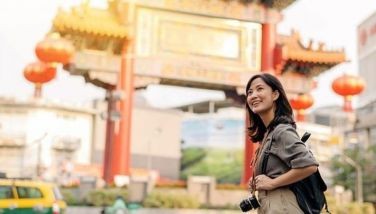
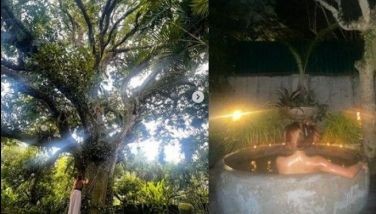
 Exclusive
Exclusive